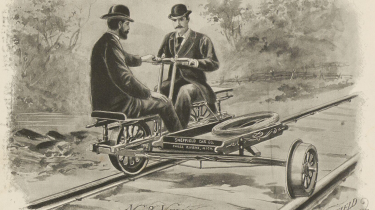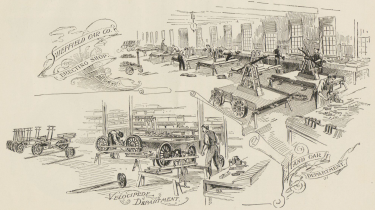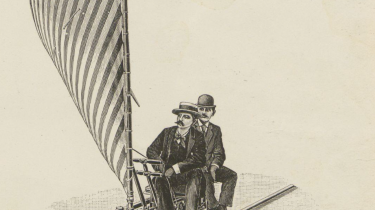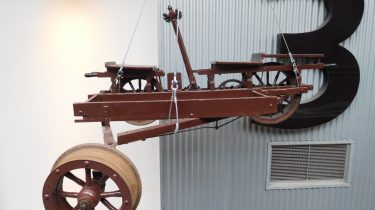



Type: No. 3 Velocipede Car
This three-wheeled handcar was driven by two people seated across from one another. They would have used their hands to push a handle – the ‘arm’ – back and forth, causing the rear wheel to turn via a crankshaft. This No. 3 Velocipede Car or Telegraph Car made by the Sheffield Car Company in the United States was built around 1890. It is among the oldest preserved hand-cars of its type worldwide. This specimen was found near station Hilversum in a shed belonging to the Roads & Public Works department sometime around 1930.
Multiple versions of the Velocipede Car sold quite well, especially in the United States, but they were also found not only in the Netherlands but in the United Kingdom and Australia as well. The major advantage of this hand-car was that it could easily be adjusted to fit various track gauges: all you had to do was shorten or extend the crossbar to which the third wheel was attached. But it also had the disadvantage of easily derailing on curves as little weight was distributed to the third wheel. What’s more, the hand-car could only go in one direction: the third wheel had to face forward or the car could jump the rails.
The Sheffield Car Company was founded in the town of Three River, Michigan around 1880. Sometime around 1900, the factory was acquired by the Fairbanks-Morse company, which continues to manufacture diesel engines and other products to this very day.


